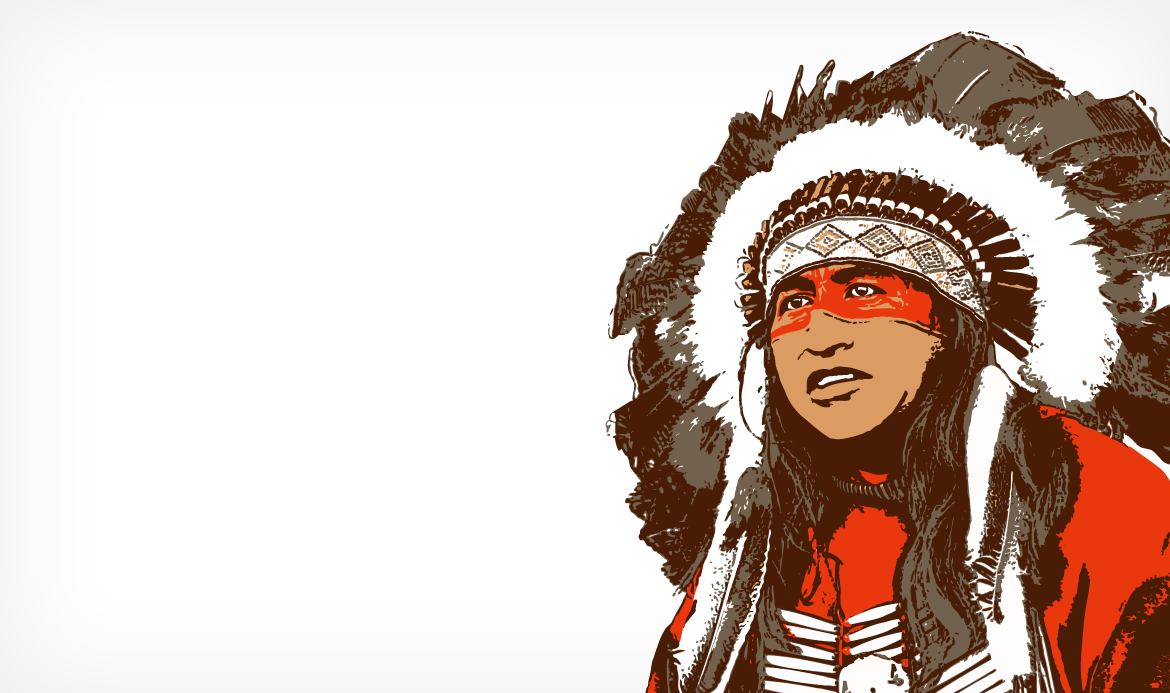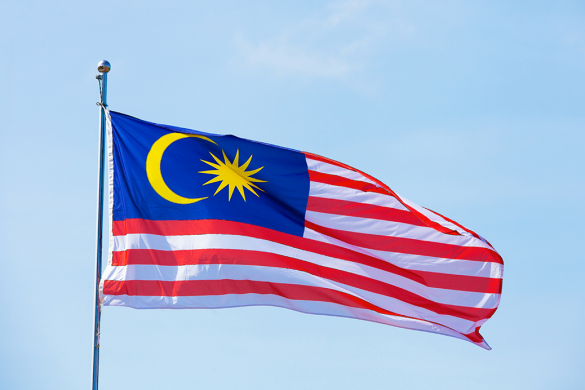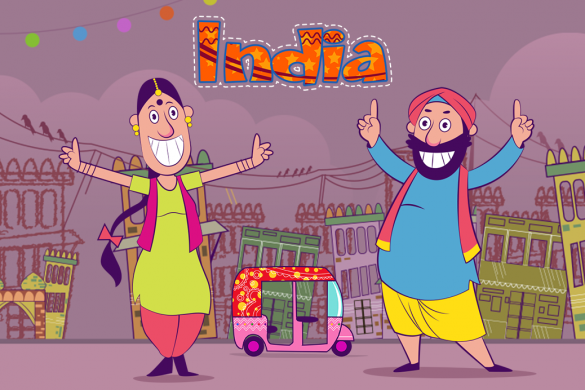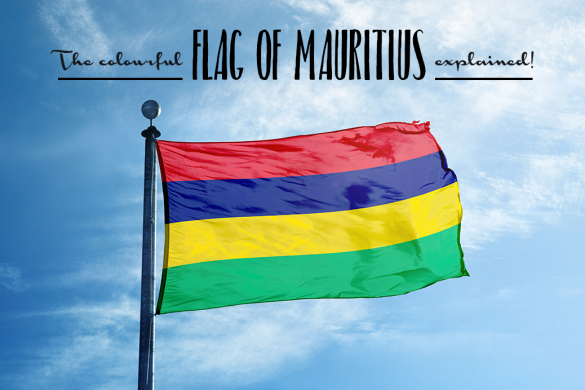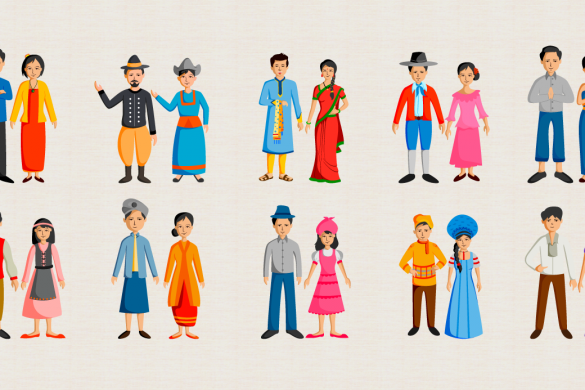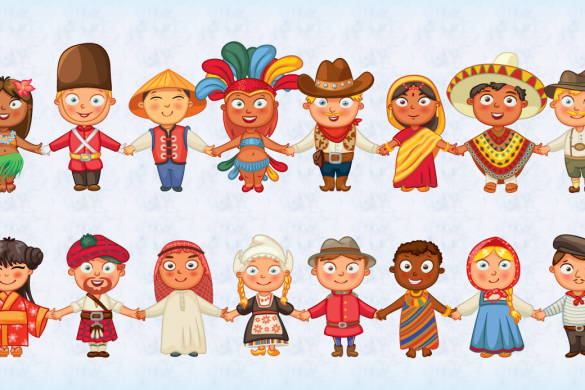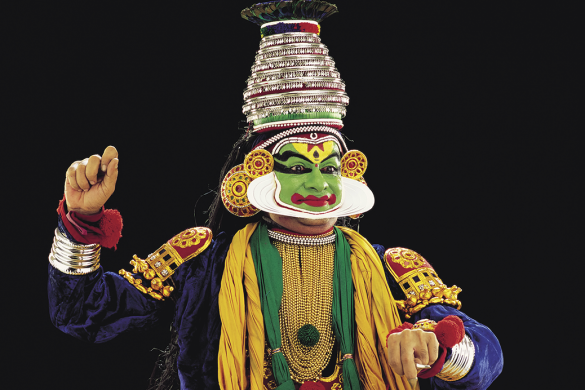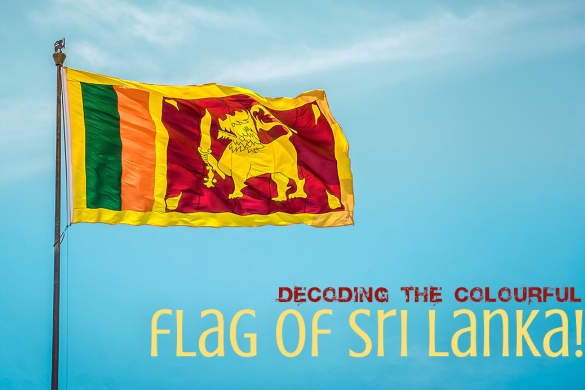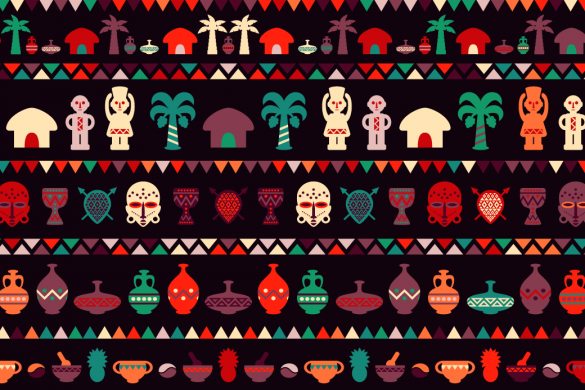The Native American culture is rich in tradition and history. Since their inception, the individuals who comprise Native American colourful tribes have effectively and vehemently guarded their secrets against the outside world. But one feature of their distinctive culture that has drawn particular attention is the widespread use of colours and the meaning associated with various shades by its citizens.
For example, a design on the face would have a different significance than the same pattern on another part of the body. There is also a difference in the symbolism based on the physical places on the body. This comprises images, hues, and patterns. The locals disapprove of using the symbols or patterns without understanding their meaning. For Native Americans, colours have been very important. Colour and symbolism are a big part of their culture with colour and its meaning.
Relation of Culture and Colour
The traditional Native American worldview has always placed a high value on colour and art. As there was no notion or word for art in their languages, the enlightened Natives used colour and art for aesthetic enjoyment. This suggests that colours and art were never seen as distinct from other facets of daily life. To put it simply, colours signified the practical, social, and spiritual facets of Native Americans’ way of life.
Tribes used colour to commemorate their rich heritage and long-standing customs. Their symbolism was notably essential in shamanism – the traditional medicine or healing rituals performed by the people, and also in the war, where warriors painted their faces in different colour paints. The numerous tribes scattered around North America used various symbolic colour meanings. Colours continued to have similar symbolic connotations even after the British colonists and Native Americans came into contact.
Native American Colour Symbolism
Let’s investigate the meanings and symbols associated with various Native American colors among the various Native American Indian tribes.
Black
Black Native American colours symbolise ongoing war preparation because it was seen as an aggressive colour. It continues to be associated with power and success. According to legend, in ancient times, warriors painted their faces with black battle paint to represent victory and to show off their strength.
According to the Cherokee shamans, Black represents both the west and the spirit of death. Therefore, the shaman called upon the Red Man (the spirit of strength, victory, and success) to aid his “clients” and condemned his (the client’s) opponents to the disastrous powers of the Black Man of the West.
White
Some tribes would swap the white feathers on their sacred tribal pipes for red ones when war was about to break out. White Native American colours, in the eyes of the Cherokee, symbolised the South’s tranquilly, and contentment. People would eat white food at ceremonial events like green corn dances and ball plays, and after the dance or ball play, they would return down white trails to their white homes.
White was the colour of the stone pipe used to ratify peace treaties, and the indigenous also employed white beads in bead conjuring.
The White Spirit offered happiness and tranquillity, and the south’s direction corresponded to the colour white.
Brown
Brown Native American colours have ambiguous and vague connotations in Native American slang. It mostly symbolises the tone of the skin.
Green
Green Native American colours are portrayed in Peyote Art as Mother Nature. Native Americans employed green herbs because they believed that the colour green supported life. Green also represented freedom, growth, fertility, youth, utility, and labour. Green represented perseverance. Green is thought to offer healing properties and is connected to harmony.
Yellow
Yellow was seen to be one of the good Native American colours. It demonstrated the wearer’s bravery and his willingness to battle till death. In addition to these two meanings, yellow was associated with intelligence and death.
Blue
Blue Native American colours served as a metaphor for tranquilly and heaven to Native Americans. Blue, however, stood for the North and the Blue Man or Blue Spirit, who brought difficulty and defeat with him, according to the Cherokee shamans.
Native American tribes in the South Eastern United States believed that the colour blue protected evil spirits. For this reason, they frequently painted the doors to their homes blue. As the Stone of Protection, Native Americans often used turquoise blue stone.
Red
The red Native American colours represented the earth element and the mountains. Native Americans painted their bodies and faces with this hue. In addition to white and black, the Powhatan tribes included red in their pipes, masks, headdresses, body and face paint, warrior feathers, and jewellery. Unexpectedly, the white-red-black trio, so significant to the Powhatan, is also found in West African societies, maybe due to their possible presence in the Chesapeake Bay in the 17th century.
How did Native American Get the Colours?
1. Wool, cotton, and other textiles were dyed by Native Americans using beautiful, delicate hues created from plant ingredients. Though hues of yellow were the simplest to manufacture, they could make practically any colour.
2. The plants the Native Americans utilised as dyes are listed below.
3. Blacks include Mountain mahogany bark, dogwood bark, hickory bark, alder bark, and wild grapes.
4. Blues include Larkspur petals, alfalfa blooms, and sunflower seeds.
5. Browns include birch bark and walnut shells.
6. Greens include juniper berries, lily-of-the-valley leaves, moss, and algae.
7. Purples include rotting maple wood, blueberries, raspberries, and blackberries.
8. Reds include cranberries, dogwood bark, beets, and sumac berries.
9. Yellows include moss, peach leaves, birch leaves, sagebrush, goldenrod stems and flowers, sunflower petals, dock roots, marigold petals, and onion skins.
Native American Colours
The majority of Native American artefacts were embellished to enhance their beauty. They added colour and patterns with paint, beads, quill embroidery, carving, and weaving, and they added colour and patterns. Sometimes a pattern or colour serves as a symbol, representing something or providing context. For instance, among the Crow, the colour black represented triumph; arrow symbols may refer to a hunt or a conflict.
Each community’s colours and patterns used in ceremonial crafts had unique meanings. With the help of these symbols, a myth or significant event may be recounted or communicated on a drumskin or leather pouch. Sometimes the creator of a ghost garment or another ceremonial item would have a dream that would reveal the ideal pattern.
Red
The colour red represented the earth element and the mountains. Native Americans painted their bodies and faces with this hue.
Green
Green items are portrayed in Peyote Art as Mother Nature. Native Americans employed green herbs because they believed that the colour green supported life. Green also represented freedom, growth, fertility, youth, utility, and labour.
Yellow, Orange and Gold
The colours yellow, gold, and orange stood for the South, fire, and even the autumnal season. Here are some Native American tribes’ metaphorical interpretations of these colours:
The colour yellow represents the strength of pollen, divinity, and flawless ceremonial control.
Orange represents the sun’s light’s ability to create and recreate.
Gold, the gorgeous, gleaming metal for which gold prospectors pillaged Native American territories and killed Native Americans, became a representation of death and ageing. Additionally, gold represented the sun, pride, and assurance. Before their territories were pillaged, the colour gold was auspicious for Native Americans.
White
In the eyes of the Cherokee, white symbolised the South, tranquilly, and contentment.
Purple
Purple is a symbol of wisdom among some Native American tribes. Due to its associations with animals and death, purple was never employed in the face or body painting.
Brown
Brown has ambiguous and vague connotations in Native American slang. It mostly symbolises the tone of the skin.
Black
According to the Cherokee shamans, Black represents both the west and the spirit of death.
Blue
Blue served as a metaphor for tranquilly and heaven to Native Americans. Blue, however, stood for the North and the Blue Man or Blue Spirit, who brought difficulty and defeat with him, according to the Cherokee shamans.
Native American Face Paint Colour Meaning
In the days of the buffalo, the plains tribes painted men’s faces and bodies as a type of mental conditioning. Before fighting an adversary, warriors would decorate themselves with individualised, protective designs and colours.
For example, RED stood for power, success, fighting and hunting prowess. Additionally, because hunting and victory in war were essential to the tribe’s survival, they also stood for joy and beauty. Iron oxides, roots, berries, beets, and ochre were used to make red face paint.
Native American Feather Colour Meaning
What is Native American culture? What does a feather stand for? Each feather utilised by a tribe member—whether from a bird’s wing or its tail—had unique energy and symbolic significance.
Feathers were employed for various functions, including healing, purification, blessing, and awakening.
Blue
The blue feathers represented calmness, inspiration, a spiritual connection, and psychological awareness in native American culture.
Purple
The indigenous people viewed this colour as a representation of enlarging spiritual awareness, spiritual connectedness, and spiritual development in native American culture.
Yellow
Native Americans utilised yellow feathers as emblems for mental alertness, vision, happiness, gladness, and intelligence in Native American culture.
Pink
Native Americans believed that this Native American colour stood for unrequited love, romance, tenderness, compassion, harmony, loyalty, pride, and inspiration in native American culture.
White
For the native Americans, white feathers also stand for spirituality, angels, faith, safety, purity, and optimism in Native American culture.
Gray
This feather colour represents tranquillity and neutrality in Native American culture.
Black
For the Indians, the black feather represented mystical knowledge, protection, warning against evil, and repulsion of such energy in Native American culture.
Brown
The brown feather, which for Native Americans stands for steadiness, tenacity, home, companionship, and respect, is the most recent example in native American culture.
Orange
Native Americans also utilised orange feathers as a symbol of energy, transformation, optimism, success, original thought, creativity, and physical love in native American culture.
Green
In actuality, green feathers represent nature, vegetation, animal spirits, wealth, prosperity, and success in native American culture.
Native American Colours of 4 Direction
When Lakota people pray or do any other sacred act, they believe there are four directions in the world. The four winds originate from these Four Directions: west, north, east, and south. Each of the Four Directions has a unique meaning accompanied by colour, and the cross’s shape represents all four directions. The intricacies of how colours correspond to directions vary, as do many Native American beliefs and traditions.
West (Black)
The day comes to an end when the sun sets in the west. West hence represents the end of life for this reason. “Toward the setting light of his life,” as Black Elk puts it, Thunder and rain are sent in that way by the large Thunderbird, which resides in the west. Due to this, rain, lakes, streams, and rivers originate in the west. Water is necessary for life. Hence the west is important.
North (Red)
Winter’s icy, punishing winds come from the north. These breezes are purifying. They cause the land to be covered in snow and the leaves to fall. Someone has mastered patience and endurance if they can face these gusts like the buffalo that thrusts its head into the storm. This direction typically denotes difficulties and suffering. North thus stands for the struggles humans face and the purification process.
East(Yellow)
The sun rises in the east, indicated by the colour yellow. Dawning in the morning, light covers the planet. This marks the start of a new day. Because light enables us to see things as they truly are, it is also the start of understanding. East represents the wisdom that helps people live good lives on a deeper level. In the past, individuals would get up early to pray while facing the rising sun, pleading with God for insight and comprehension.
South (White)
Because the sun is at its highest in the southern sky, this direction represents warmth and expansion. The sun’s radiation can snare life from the planet. All life, it is thought, originates in the south. Southerly winds are very welcoming and warm. When a person dies and enters the afterlife, they follow the Milky Way’s route back to the south, going back the way they came.
Conclusion
It is only feasible to generalise colour symbolism because there were so many diverse Native American tribes, particularly in terms of face paint, war paint, beads, feathers, art, pottery, jewellery, and shamanism.
Red was traditionally associated with blood, energy, power, earth, conflict, and success.
Black was an aggressive colour representing death, strength, triumph, and success.
White served as a symbol of heaven, sadness, and peace.
Blue stood for knowledge and assurance.
Green stood for endurance, healing, and harmony.
Yellow was both the colour of knowledge and death. Brown and purple were used to symbolise death and animals.
FAQs
1. What is the colour of native American traditional clothes?
Native American traditional clothes or Buckskins have a yellow or greyish tint, depending on the type of wood used to smoke them. Such apparel is cosy, practical, and long-lasting.
2. How do native Americans maintain their culture?
Through beadwork, painting, sculpture, and ledger art, many Native Americans continue their predecessors’ traditions. This artwork’s preservation is a lovely way to honour the culture.
3. What is the native American flag look like?
It is a flag with six directions of Native American colours. The red stripe denotes the east, the yellow stripe the south, the white stripe the north, the black stripe the west, and the blue stripe the sky above. The green stripe symbolises the earth beneath. The hypothetical arrangement displayed in this variation is based on the current colour scheme known as the “four directions”.
4. Do native Americans have a flag?
Native American tribes have their flags and insignia in both the US and Canada.
